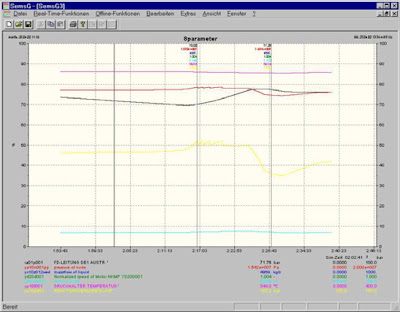
Schematic and Description of Simulator System Capability for I & C Information Exchange
- The download of the Distributed Control System (DCS) from the Reference Plant shall be via the translator-tool. The original CAD drawing will be parsed by a translator into simulator format. For the uploading process, the modified simulator CAD drawing (in identical format) will be transferred to the Reference Plant Engineering Work Station (EWS) from the Simulator Engineering Work Station (SEWS) .The modifications of the I & C at the Simulator Engineering Work Station (SEWS) will be done using the original DCS CAD editor. The downloading of the logic or modifications of the I & C shall be only to simulator environment from the SEWS. If the logic or modifications of the I & C is acceptable in the simulator environment, it may be subsequently sent to the Reference Plant Engineering Workstation (EWS) from the SEWS.
- The Contractor shall configure read-only feature on the Simulator System ABB Operator Station connected to the Reference Plant to fulfill the connectivity requirement, see Schedule 1 Figure 1. The connectivity could be established either online or offline via a fiber optic communication without any effects on the Reference Plant.
- The upload and download capability for the logic configuration and the read-only feature on the Simulator System ABB Operator Station shall not affect the Reference Plant.

























